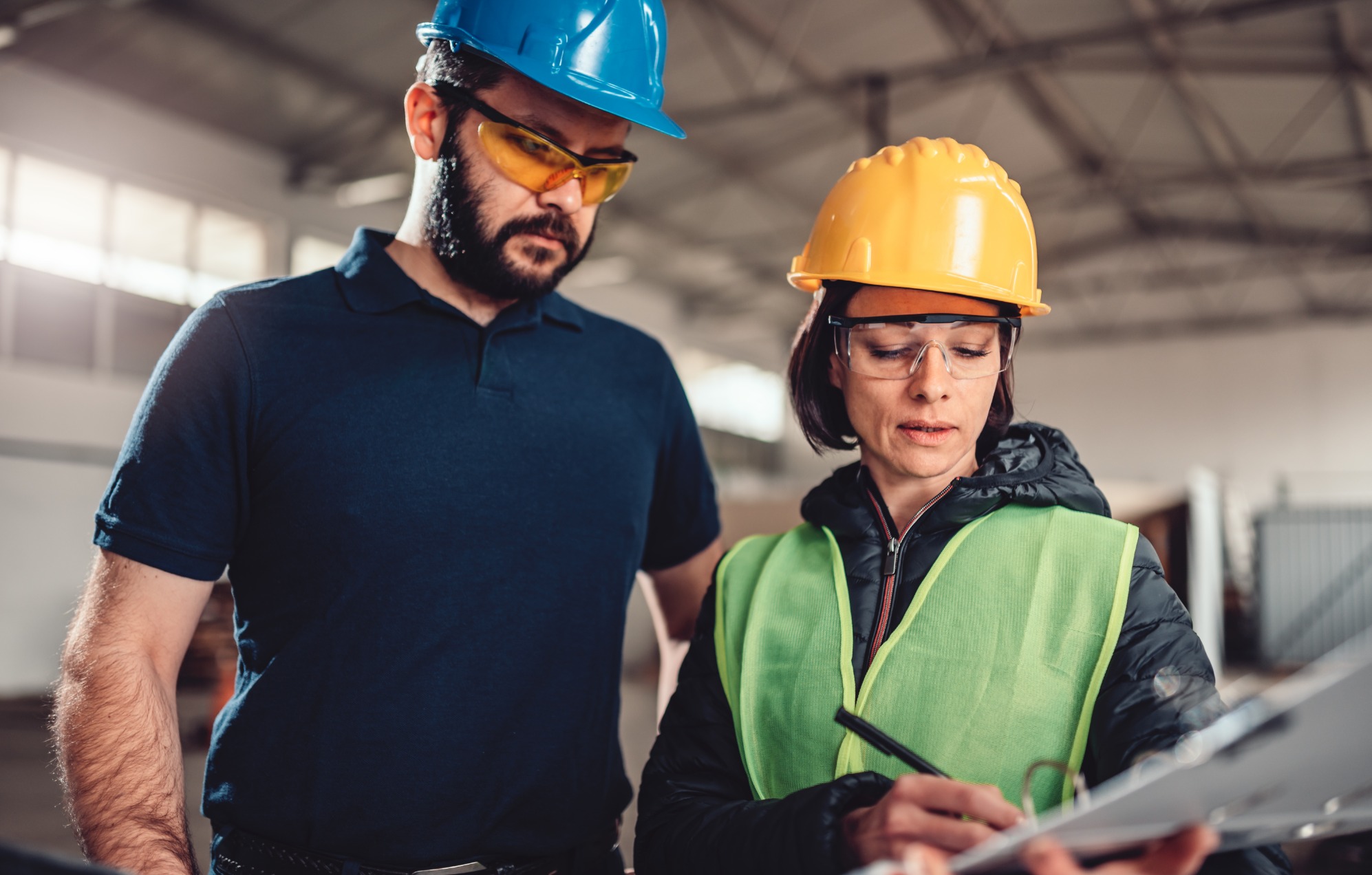According to the HSE’s Labour Force Survey, the number of work-related accidents that take place in the construction industry is significantly higher than any other line of work.
It’s not hard to see why. Building materials, cables, and tools can present potential trip hazards, and workers must constantly remain aware of large vehicles and dangerous machinery. Even the environment itself – subject to uneven terrain, inclement weather, and unstable infrastructure – can pose a threat to safety.
Here are some suggested steps that construction firms can use to minimise the risk of on-site accidents. Not only will this help avoid potentially damaging financial, legal and reputational repercussions, it will also maintain productivity and instil greater confidence, trust, and loyalty in their workers. Given the number of inherent risks, ensuring the health and safety of everyone on site must be paramount.
1. Lead by Example
Leading by example is essential if you want to encourage greater health and safety engagement. For instance, ensuring that workers are using the correct tools will reduce the risk of an injury, or checking you've provisioned your worksite with adequate shelter and resources will demonstrate you care about health and safety. It may sound rudimentary, but it’s important for site managers to lead by example. By demonstrating they care about health and safety on-site, the likelihood is their employees will become more engaged too.
2. Raise Awareness
Awareness is key to improving safety, and workers must be made aware of the potential dangers they face if they are to avoid them. Giving workers access to ongoing training and education in risk assessment and best practice risk mitigation will lead to the creation of a culture of safety, where risk awareness is kept forefront at all times.
Workers should also be given regular opportunities to practice safety skills in real life. And everyone, from directors to apprentices, should engage in raising and maintaining this awareness; continuously identifying potential hazards, and contributing to site-specific health and safety procedures.
3. Promote Accountability
Ultimately, it is the responsibility of the construction manager to ensure that every worker is aware of the dangers that come with working on a construction site. Arguably, everyone on site should be made accountable for their own safety and that of their colleagues. Good practices such as regularly attending safety briefings, making practical and actionable suggestions to improve safety conditions, and adhering to company guidelines, should be encouraged and in some instances rewarded.
A two-way flow of communications is important, too. Management expectations should be communicated downwards, and workers’ concerns communicated upwards. If workers feel responsible for co-managing health and safety in their workplace, they’ll become more engaged and far more likely to take it seriously.
4. Enforce Self-Responsibility
By the same token, anyone who fails to follow company guidelines should face the consequences. At worst, this could involve expulsion from the site; after all, anyone with no concept of construction site safety shouldn’t be allowed on the construction site for their own sake, and that of their colleagues. Online health and safety tools can help businesses manage training qualifications, and stay on track of individuals who may not be compliant.
Generally, however, a reminder of the impact that unsafe conditions and behaviour could have on the wider team can be equally effective. Workers should feel able to report such instances without retribution too, in order that they can be addressed. For example, practising near-miss reporting enables your workforce to report potential health and safety risks, such as trip hazards or poor practice, before an incident occurs. Remain aware that this may be seen as “telling tales”, but encouraging such a proactive approach to workplace safety will only serve to benefit the effectiveness of health and safety reporting
5. Introduce Regular Monitoring
Finally, daily monitoring is essential to maintain good health and safety practices. Sites should be inspected at the beginning and end of every day, to identify potential hazards, and to ensure that everyone on site is working safely according to company guidelines. It can be beneficial to hold a brief site meeting at either end of the working day, allowing both workers and management to address any concerns or issues that might arise.
Health and Safety is Paramount in Construction
Every business has a legal obligation to manage the health and safety of its employees. The nature of the construction industry, however, means there is perhaps a stricter requirement for ensuring workplace safety. Ongoing education and engagement will help to instil and maintain awareness of the potential hazards workers might face on a daily basis, and will equip them with the knowledge and skills to mitigate these risks, continuously improving the situation as they go.
To learn more about how your construction business can improve health and safety engagement, visit the Safetybank blog.
.png)




